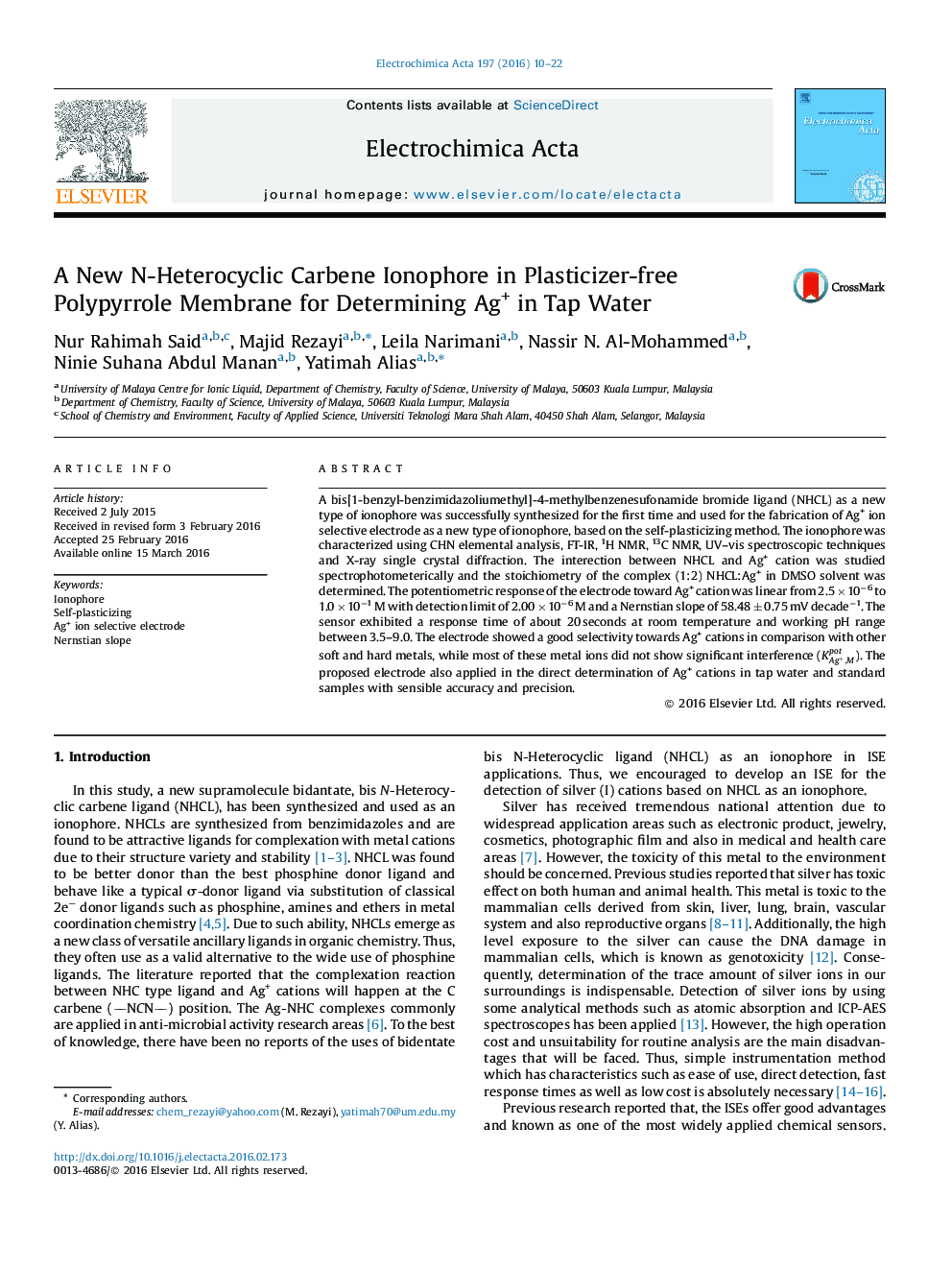| Article ID | Journal | Published Year | Pages | File Type |
|---|---|---|---|---|
| 6607982 | Electrochimica Acta | 2016 | 13 Pages |
Abstract
A bis[1-benzyl-benzimidazoliumethyl]-4-methylbenzenesufonamide bromide ligand (NHCL) as a new type of ionophore was successfully synthesized for the first time and used for the fabrication of Ag+ ion selective electrode as a new type of ionophore, based on the self-plasticizing method. The ionophore was characterized using CHN elemental analysis, FT-IR, 1H NMR, 13C NMR, UV-vis spectroscopic techniques and X-ray single crystal diffraction. The interection between NHCL and Ag+ cation was studied spectrophotometerically and the stoichiometry of the complex (1:2) NHCL:Ag+ in DMSO solvent was determined. The potentiometric response of the electrode toward Ag+ cation was linear from 2.5 Ã 10â6 to 1.0 Ã 10â1 M with detection limit of 2.00 Ã 10â6 M and a Nernstian slope of 58.48 ± 0.75 mV decadeâ1. The sensor exhibited a response time of about 20 seconds at room temperature and working pH range between 3.5-9.0. The electrode showed a good selectivity towards Ag+ cations in comparison with other soft and hard metals, while most of these metal ions did not show significant interference (KAg+,Mpot). The proposed electrode also applied in the direct determination of Ag+ cations in tap water and standard samples with sensible accuracy and precision.
Keywords
Related Topics
Physical Sciences and Engineering
Chemical Engineering
Chemical Engineering (General)
Authors
Nur Rahimah Said, Majid Rezayi, Leila Narimani, Nassir N. Al-Mohammed, Ninie Suhana Abdul Manan, Yatimah Alias,
